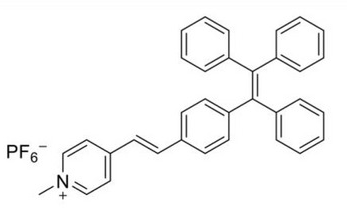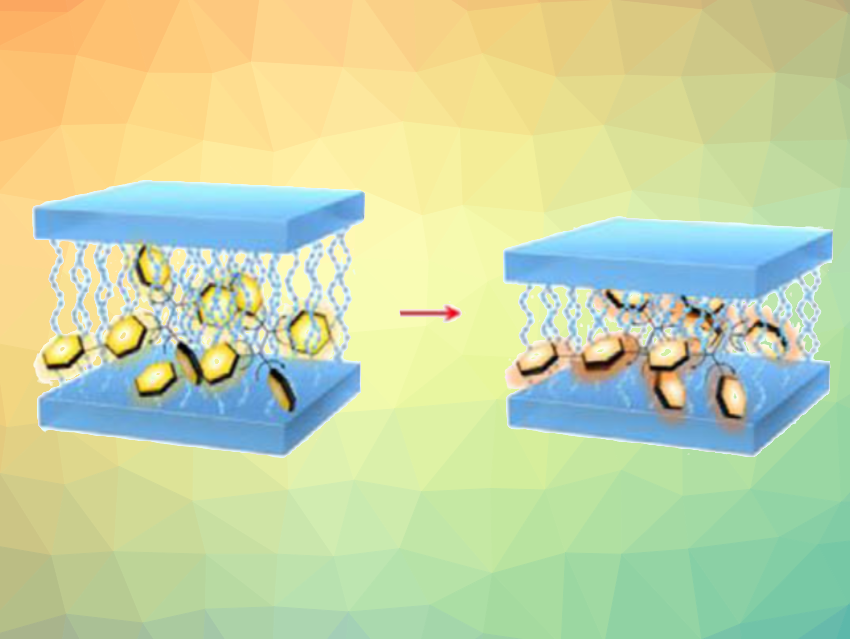The crystalline structure of polymers influences their macroscopic properties. Tracking the structural evolution during polymer processing could be useful for materials design. There are well-established methods for the characterization of polymer structures, but most of these techniques are limited to a fixed state, and it is difficult to track the dynamic evolution process. In this context, luminescent materials could serve as “built-in” sensors to extract information about their localized microenvironment in a polymer.
Yanhua Cheng, Donghua University, China, and colleagues have used organic aggregation-induced emission (AIE) luminogens. i.e., compounds whose emission is greater in an aggregated state, as building blocks that can heterogeneously assemble with polymer networks. A change in the optical signal can then be used used to detect changes in the polymer microenvironment (example pictured above).
The team used the AIE molecule TPE-EP (pictured below) and studied its confinement within semi-crystalline polymers of poly(L-lactide) (PLLA) and poly(D-lactide) (PDLA). The polymers can be used to create adjustable confined spaces: By adjusting the temperatures during crystallization, the size of the free space between adjacent crystalline layers can be controlled. TPE-EP is located in this space, and its emission shows different colors when confined in different crystalline forms due to conformational changes.
This application of optically responsive materials could provide theoretical guidance and data that is useful for the processing and preparation of polymer materials and their composites.
- Confinement fluorescence effect of an aggregation‐induced emission luminogen in crystalline polymer,
Lan Zhou, Linlin Zheng, Xiaoxiao Yu, Mengyue Gao, Chengjian Xu, Yifan Ge, Tianxiang Bai, Jin Wen, Yanhua Cheng, Meifang Zhu,
Aggregate 2023.
https://doi.org/10.1002/agt2.338




